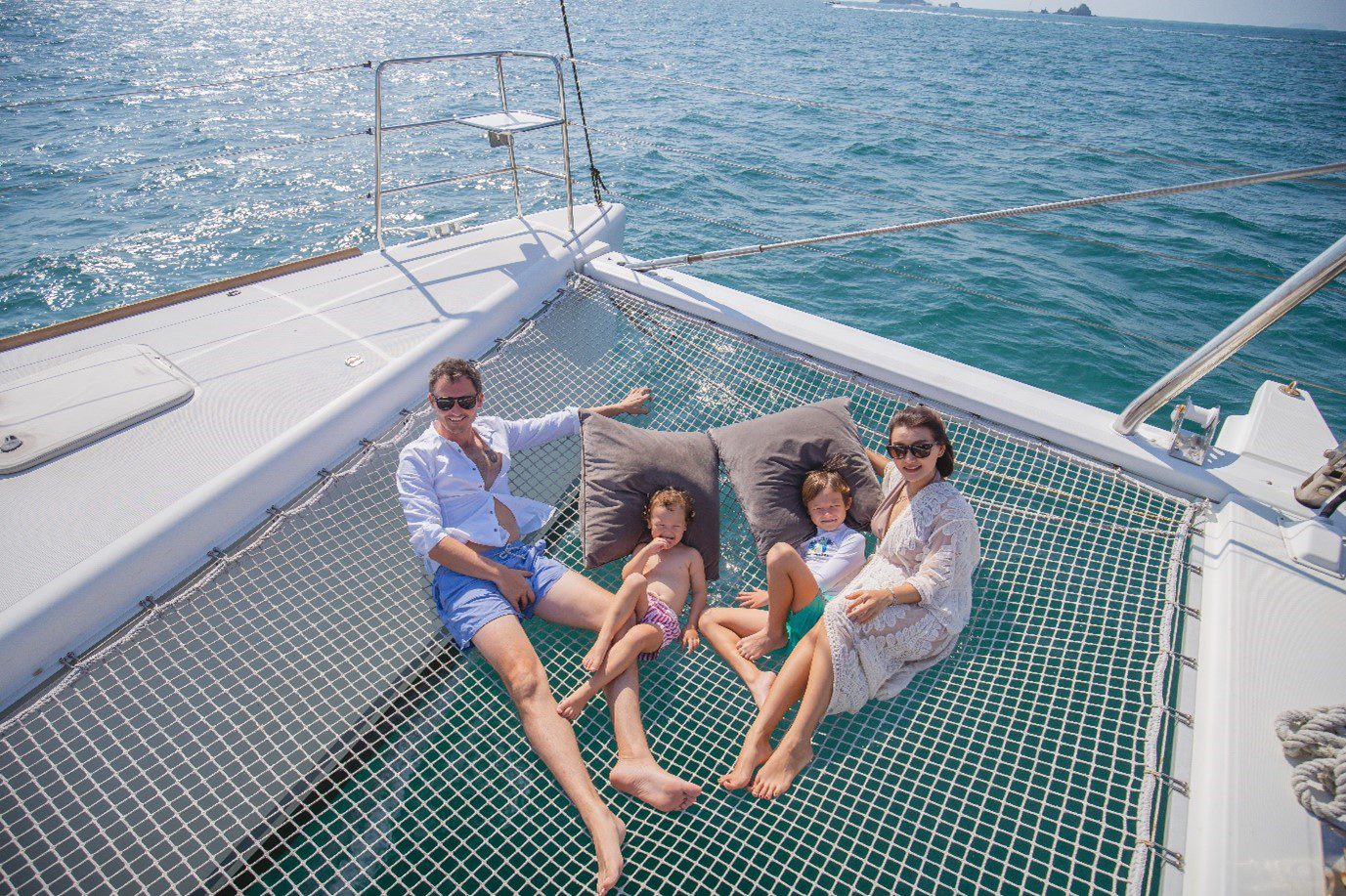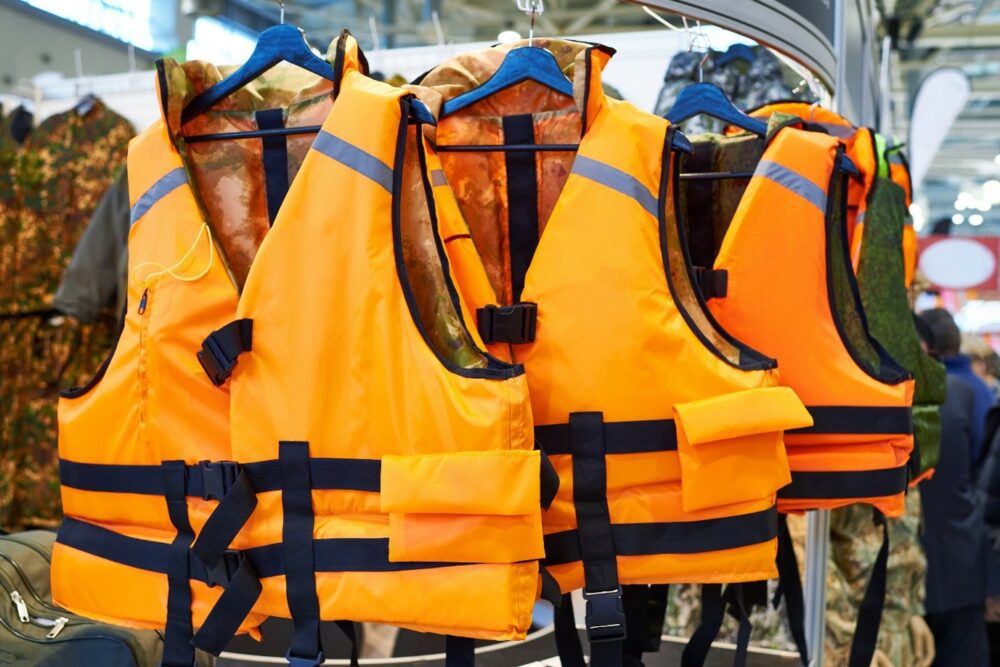


Many people dream of a life on the ocean waves but very few ever get the chance to experience it. Those who do are exceptionally lucky and often try to make the most of every opportunity to sail away and leave their cares behind. Sailing gets under people’s skin, becoming akin to an obsession that some would say runs in the blood. So, what could be more natural than wanting to pass that enthusiasm and love for all things yacht-related onto your offspring?
Here at Simpson Yacht Charter, we understand that passion all too well, having been bitten by the bug long ago. In this article, we will examine measures you can take to protect children on board a water-borne vessel. Keeping one eye firmly on their safety and well-being whilst ensuring they have the exhilarating experience of a lifetime.
BEFORE YOU LEAVE THE SHORE
It is crucial to instill in any children who will spend time on the water a sense of respect for the vessel and an acknowledgement that it is not without danger. That’s not to say they should be scared to set foot on board, but it must be made clear that there are rules to be obeyed, not up for discussion. If the children in question are too young to comprehend this concept or are headstrong and unpredictable, extra measures may need to be taken. It may be necessary to postpone starting their ocean-borne experiences until they can grasp that there is much fun to be had but that it does not come without responsibilities and promises.

TODDLERS
Children of a certain age are not apt to follow instructions 100% of the time and are inclined to wander away and thoroughly explore any available space. Upsetting and counter-intuitive as it may seem, it may sometimes be necessary to tether them for their safety. It is for each family to determine whether their children can tolerate being secured to a safety line, but without significant modifications to the vessel, there is no choice. The risk of them falling overboard is real and there are many other dangers to be found if they try hard enough.

SAFETY NETS
One way to prevent small children from accidentally falling overboard is to install safety nets around any open sides of the vessel, usually along the handrails. This should be a successful way to stop stumbles and trips from pitching them into the water. However, almost nothing stops a determined toddler, and if they decide to explore and climb the safety nets, they will be at serious risk. Unless you can keep your eyes on them the entire time they are on deck, it is simply too dangerous to have young children roaming around.
NON-NEGOTIABLE RULES WHEN SAILING WITH CHILDREN
More rules are associated with sailing a yacht than most other pastimes, and with good reason. While the potential for fun and excitement is second to none, so is the potential for complete disaster. Therefore, the number one, non-negotiable, golden rule to top them all concerns:
1. Life jackets
No ifs, ands, or buts: whenever children step onto a yacht, they must be wearing a lifejacket and there is no argument about it. Even when they return to shore, the jacket must be worn around the vessel and on the marina. It is far too dangerous to have children wandering around without life jackets, no matter how good they are at swimming. The lifejacket must:

2. Practice
Safety equipment is a crucial part of any yachting excursion and can protect your children to a certain degree, but there is no substitute for knowledge and practice. Sit together as a family and discuss any potential problems you might encounter at sea and what must be done if they happen. Familiarize youngsters with their lifejackets and show them how to hold them down as they jump into the water. Start at a local swimming pool and make a fun afternoon of it as they grow more confident and competent at using their jackets correctly. Some other elements of safety to drill and practice include:
In all the situations above, all family members, not just your children, should know exactly where they are supposed to go and what to do there. Even if their job is to find a safe, secure place to sit and hang onto netting, they should be in no doubt about it. The system might be a simple numerical one where you label certain areas of the vessel and instruct them to go to that number when necessary. No matter how you practice your emergency procedures, try to make the drills fun and engaging if you can; the idea is not to terrify the children. It is intended to prepare them in case the worst happens and reduce the chances of them exacerbating any situation with panic and poor decision-making.
PUT THEM TO WORK
If you engage your family members in the day-to-day operation of the yacht, they will grow to understand how things work and what they need to be careful of. Experience leads to confidence and nothing will serve them better in an emergency than being familiar with the equipment they need to use. Complex tasks like cutting off the engines or dropping anchor are elements of life on board that you may wish to teach them in time. Remember, you’re hoping to instill in them a passion for sailing, and the more involved they are, the greater the chances you will succeed.
ADDITIONAL SAFETY SUGGESTIONS

A PLACE FOR EVERYTHING AND EVERYTHING IN ITS PLACE
A principle it pays to apply to all sailing excursions, especially those including children, is that items are safely stowed at all times and are returned to their proper places when not in use. Anything from glasses and cutlery to tins of food or even mobiles can be dangerous if falling from a higher surface onto a child. Insist that everyone aboard stows their items correctly and the chances of unfortunate mishaps are duly reduced.
CONCLUSION
Although sailing with youngsters might seem to put them at unnecessary risk, it is a safe activity that offers them an unmatched life experience. Provided a few strict rules are applied and sensible precautions taken, there is no reason to be unduly concerned about taking children on board. It can be genuinely life-affirming for all involved.

CONTACT US
We share your passion for all aspects of yachting here at Simpson Yacht Charter and love nothing more than talking with people about the subject. Please feel free to contact us with any questions or comments about yacht chartering with children and we will gladly share our thoughts. We have an extraordinary range of vessels to choose from if you are interested in taking out a charter, many of them child-friendly.
25th September 2023